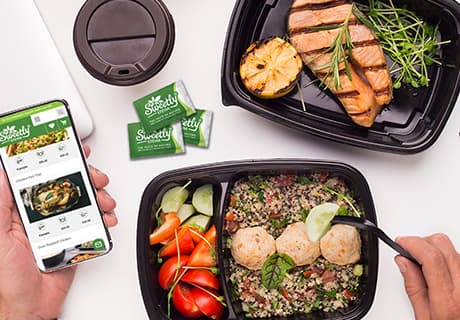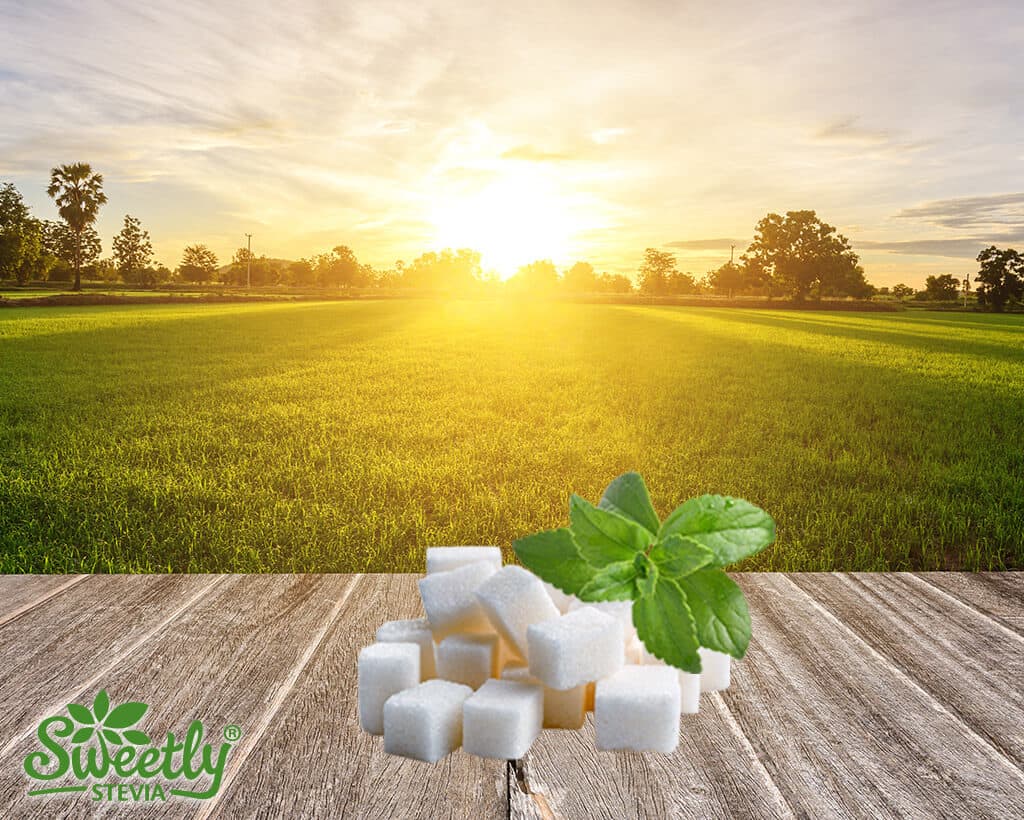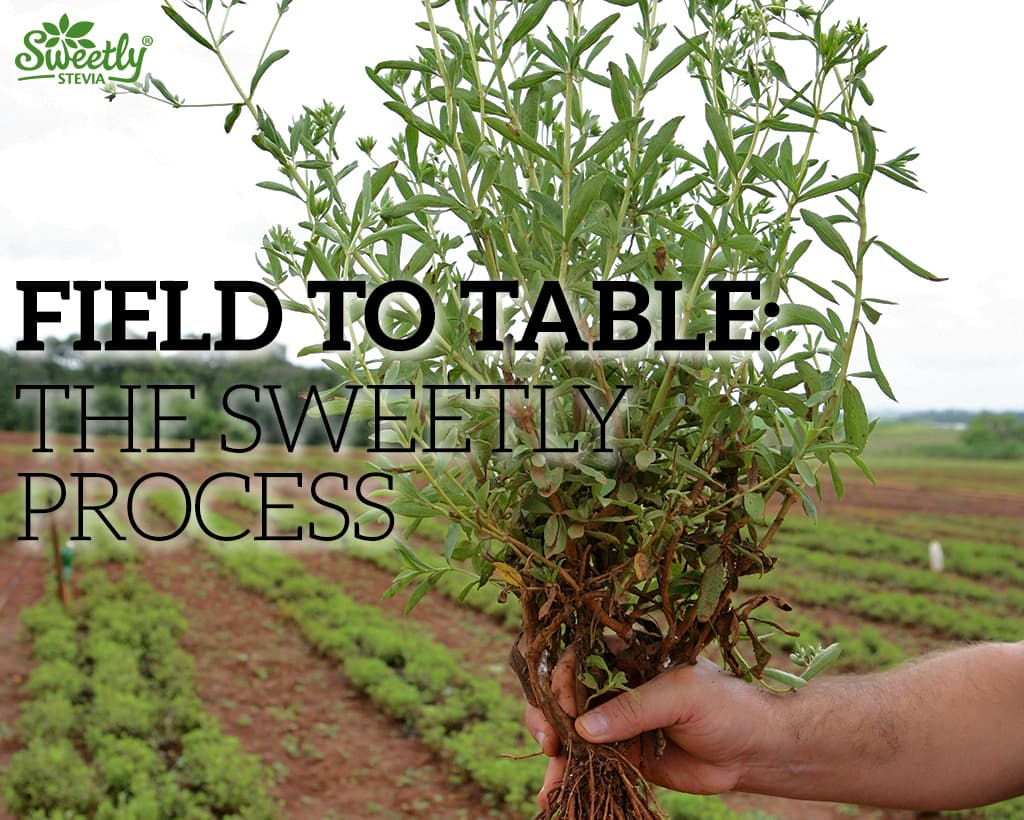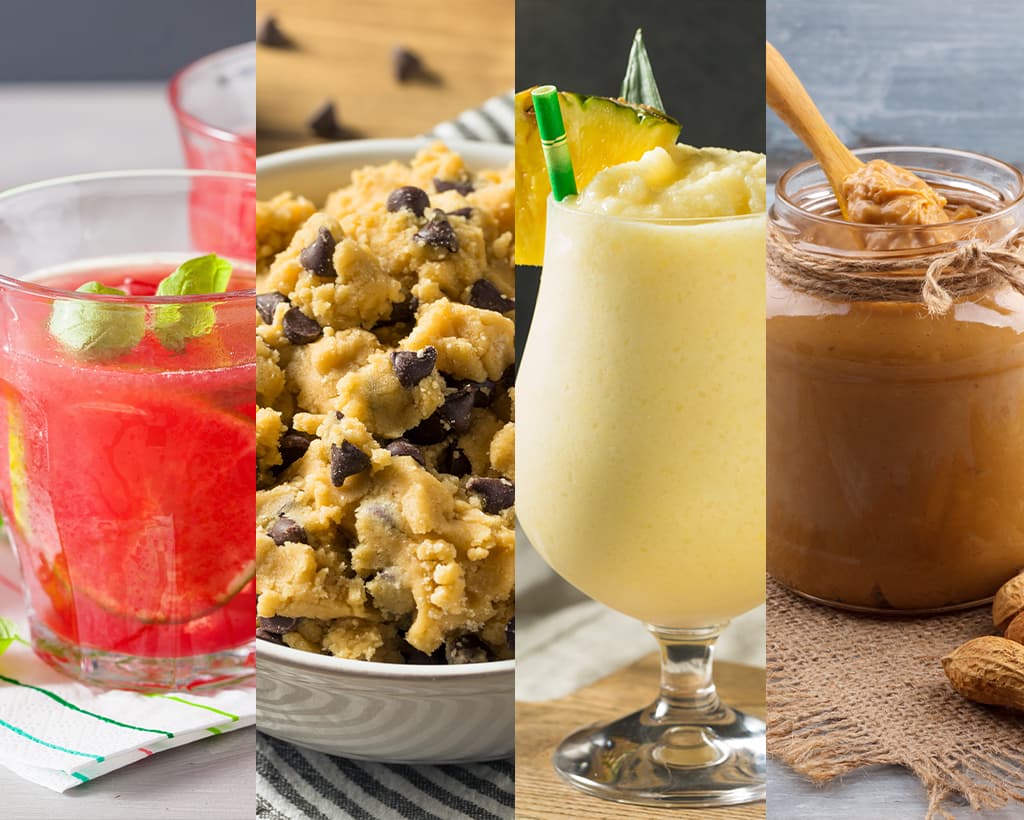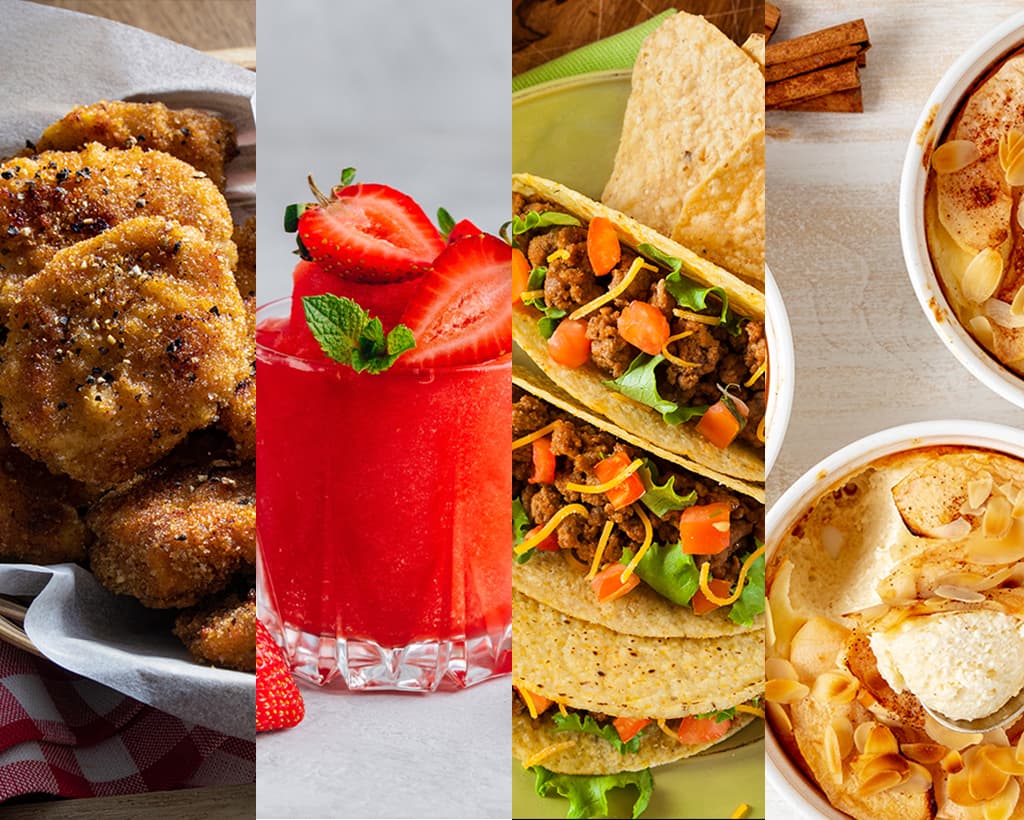The History Of Coffee
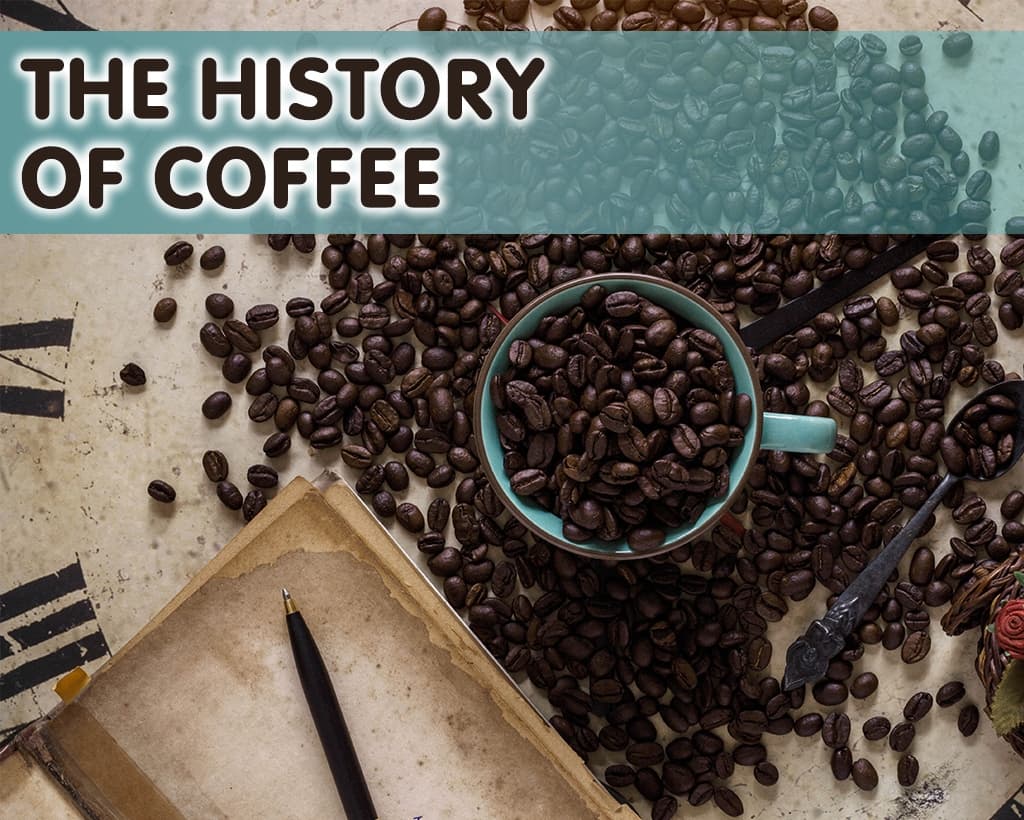
Cappuccino. Latte. Americano. Flat white… There are countless types of coffees and breakfast wouldn't be the same without them. For most adults, a productive day wouldn't be the same without a freshly brewed mug of arabica, robusta, sumatra, or any other variety of coffee.
Coffee is the second most popular beverage in the world, second only to water, and in the U.S. alone more than 450 million cups of coffee are consumed per day. In fact, coffee is of such importance in human lives that it's even included in most military rations. But why?
Where did our worldwide love for this aromatic, stimulating, delicious beverage come from, and how exactly did it spread across the globe?
The story of the birth of coffee is unclear and unverified, but the Sweetly Team has narrowed it down to two origin stories. One takes place in Ethiopia and the other is set in Yemen.
Do you like goats? Let's go to Africa...
Legend has it that around 850 A.D. in the Kaffa Province of Ethiopia, a young goat herder named Kaldi noticed that when his goats ate the small red berries of a nearby bush, they became highly active. Intrigued, Kaldi plucked some berries for himself and after eating them, he too experienced that he felt energized and alert.
He wanted to share the effects of these magical berries, so he took a few to a nearby monastery, but the head monk, having accepted a belief system that acknowledges the dark, demonic workings of the devil, threw the berries into a fire, exclaiming, "Not today, Satan!"
Ironically, the result of the berries burning on the fire was a captivating aroma that hypnotized the monk. So after the fire burned out, Kaldi and the monk picked up the roasted red berries that were left among the embers. The berries now looked like dark beans.
They ground these dark beans right then and there. No one knows what instinct or influence took over them at that moment, but Kaldi and the monk stirred the ground roasted beans into a mug of steaming-hot water and that's when the first cup of coffee was produced.
Now to the other origin story…
In the far-off regions of ancient Yemen, there was a man named Sheik Omar who was famous for his healing powers. For reasons unknown, Omar was banished from his community to a cave in the desert. Hungry and desperate, Omar ate the red berries from a nearby bush, but was taken aback by their bitter flavor. Eager to make the most out of his bitter meal, Omar roasted the beans, ground them up, and boiled them in water, producing a dark, energizing liquid that greatly helped sustain his efforts to stay alive in the unforgiving desert.
When Omar took his powerful elixor back to his community and they experienced firsthand the stimulating properties of his magical concoction, he was permitted to return to the tribe.
Now, both of these accounts make for good stories, but we can't know for sure if that's how the first cup of coffee came to be. It seems however, according to historical evidence, that crediting the discovery and creation of the first cup of coffee should go to both Ethiopia and Yemen.
The plant itself--those flowering shrubs that produce small red berries--is native to Ethiopia. While the first real evidence we have of its roasting and brewing as we consume coffee nowadays comes from Yemen.
See, early records show that during the 15th Century, coffee was consumed around Muslim communities within Yemen, specifically by the Sufis, because it helped them stay up for long religious ceremonies. The coffee they drank was brought to them by merchants and as they drank it, they were able to stay up all night and engage in intense prayer. Where were those merchants from?
You guessed it! Ethiopia!
During the 1600s, the beverage began quickly spreading to Europe. The Netherlands was the first to open coffee plantations in Sri Lanka in the early 1600s. The Dutch-East-India company began importing coffee from "Java" and "Salan" in 1711. Pretty soon other European countries followed suit.
In the 1700s, the French took coffee and its beans to the Carribean. This was around the same time the Portuguese introduced coffee to Brazil. In the late 19th Century, the Spanish had taken it to Central and South America. It's no wonder that nowadays coffee from these regions are considered to be the best in the world!
But aren't all coffee beans the same?
Not quite.
Time for a Sweetly Stevia explanation!

There are many different types of coffee beans, but the ones that are the most common are arabica, robusta, liberica, and excelsa. They all grow in what is known as the "coffee bean belt".
The coffee bean belt is a wide region located between the Tropics of Cancer and Capricorn, and no we aren't talking about those racey Henry Miller novels--though a strong cup of coffee will certainly get you through both of them!
Coffee grows best between these Tropics because they provide the best environment and temperature for the shrubs to thrive. According to the International Coffee Organization, 20 billion pounds of coffee are produced in the "bean belt" per year. The most common type of coffee bean is the arabica. Historians believe it was the first kind of coffee to be cultivated because it comes from the Ethiopian highlands.
Nowadays, 60% of the coffee consumed around the world is arabica. It's mostly grown in Latin America, and it's known for its sweet, fruity, and slightly acidic taste--adding Sweetly Stevia can help with that, though!
However, it takes arabica coffee plants seven years to grow and fully mature before the red berries--those beans--are ripe for the picking. This makes arabica pricier than other beans in the coffee family like robusta, liberica, and excelsa.
The second, most common kind of coffee bean is robusta. This is the one you'll probably see in supermarkets and your neighborhood grocery store. They're grown in African and Indonesia, and it's fairly popular due to its high caffeine concentration, making it perfect for espressos and a powerfully energizing cup of joe. But that also makes coffee from robusta beans more bitter in taste.
Lastly, liberica and excelsa are grown in certain parts of Southeast Asia, and therefore make up a really small portion of the overall coffee consumed throughout the world. This also makes them pricier than robusta and arabica beans.
Currently, Brazil is the world's largest coffee exporter. Brazil is responsible for pumping out more than 45 million bags of coffee beans per year and these are mainly arabica beans.
Coffee really caught on in Europe. People drank it, loved it, and drank more, and soon its popularity became cultural. Up until this point, people customarily drank wine or beer with breakfast. No, they weren't raging alcoholics! Back then, the alcohol content in wine and beer was very low, and the main purpose of drinking alcohol was that plain water contained bacteria that could make people sick. But we don't want to digress…
Replacing wine and beer with coffee every morning made a noticeable, and positive, impact on the general population of Europe. People started their days alert, energized, and feeling good!
But although coffee had become the "West's" favorite energy booster, people forgot that it had once been considered "the devil's drink"... "We meet again, Satan…"
Because of coffee's Islamic origins, it was shunned by Christians in the West. They were suspicious of its effects, and regarded it as a pagan drink. It wasn't until 700 years after its discovery when the drink began to pick up in popularity that the issue of coffee being somehow evil in nature was brought up to the Pope of the time--Clemens VIII of Florentin.
Devout Catholics assumed--and were also hoping--that the religious leader would denounce the drink as demonic and dangerous, but to their surprise once the Pope tasted coffee and experienced its effects, he spoke favorably about it--and continued drinking it!
The Catholic congregation wasn't convinced. They feared that drinking coffee would make it easier for a demon to possess them. So, addressing their fears, the Pope decided to baptize the beans--Amen!
Fast-forward to the 15th Century, and coffee houses started to appear all over the West in the Arabian Peninsula and Europe. Coffee houses were places where people came together to play games, discuss books, and exchange cultural and political knowledge and ideas as they listened to music. In Europe, these coffee houses greatly contrasted taverns where beer and hard liquor was served because coffee was considered the beverage of intellectuals, not brutes. In fact, in Britain coffeehouses were referred to as "penny universities" because you could buy a cup of coffee for a penny and then engage in highly cerebral conversations with other intellectuals, scholars, professors, and professionals.

By the 18th Century, coffee had become the drink of the masses. Just about every country had been introduced to it. And it was even considered a medical cure for just about everything from headaches to dropsy to the common cold. People couldn't get enough…
So, in 1901, a Japanese chemist by the name of Satori Kato invented what is now known as "instant coffee". Kato patented his invention in 1903, but his creation didn't really catch on until decades later when convenience started to become key right at the end of the First World War. In 1918, the US military was buying 37 thousand pounds of coffee per day to ration to the troops.
This brings us to the Second World War, which was when Americano coffee was born--Americano is a type of coffee drink where hot water is poured over a shot of espresso, giving the beverage the same strength as espresso but with a different flavor.
American G.I.s who were stationed in Italy were homesick for their favorite American drip coffee. In Italy at the time, only espresso and cappuccino were served. For the average soldier, an espresso was too bitter to enjoy, so Italian coffee shop owners began serving their espresso shots to Americans with a cup of hot water on the side. The soldiers were able to dilute the bitter-tasting espresso and the drink mixture closely resembled the regular coffees that they missed from home.
Today, coffee continues to reign supreme. The global coffee industry earns an estimated $60 billion annually. Starbucks alone has roughly 29,865 coffee shops which are spread across 79 markets around the world. No matter where you're from, we can all agree that a great cup of coffee can make our day, and not having a cup of coffee first thing in the morning when you need one can ruin it!
The Team here at Sweetly loves coffee, but we never add regular table sugar when we brew a fresh pot. Instead, we sweeten our java with the all-natural, zero-calorie sweetener, stevia. Don't forget to always keep stocked-up on your favorite coffee beans and be sure to store your Sweetly Stevia supply right next to it!
